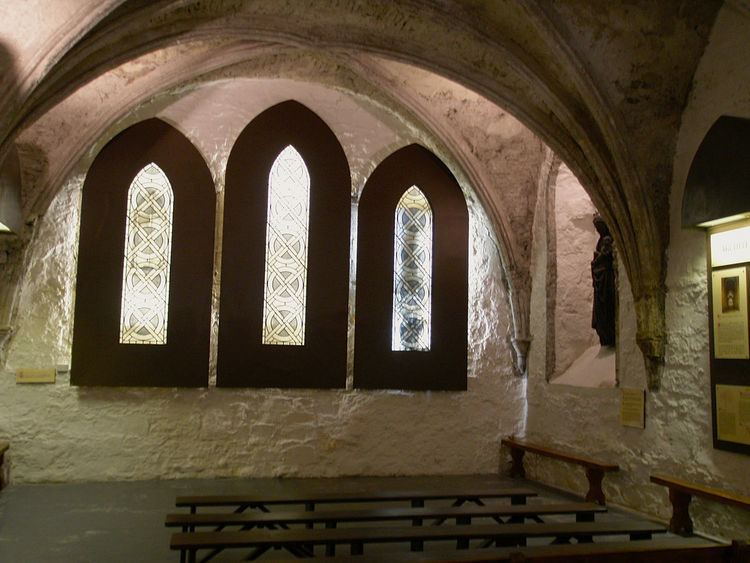Province Leinster Disestablished 1539 | Functional Status Museum Public access yes Phone +353 1 872 1490 | |
 | ||
Order Heritage designation National monuments of Ireland Similar St Michan's Church, St Audoen's Church, Whitefriar Street Carmelite, St Mary's Church - Mary Stre, Pearse Museum | ||
St. Mary's Abbey was a former Cistercian abbey located near Abbey Street in Dublin, Ireland. Its territory stretched from the district known as Oxmanstown down along the River Liffey until it met the sea. It also owned large estates in other parts of Ireland. It was one of several liberties that existed in Dublin since the arrival of the Anglo-Normans in the 12th century, which gave it jurisdiction over its lands.
Contents
History
The abbey was founded by the Irish king Máel Sechnaill mac Máele Ruanaid (died 862) in 846, according to the Annals of the Four Masters. It was originally Benedictine, but in 1139 was given by Malachy O'Morga, the legate of the Pope, to monks belonging to the Congregation of Savigny, which in 1147 joined the Cistercian order.
In 1303, a great part of the abbey and church was destroyed by fire, but was re-constructed. However, many of the city records in chancery stored in the abbey were destroyed. The abbey was one of the largest and richest in Ireland at that time.
In 1316 Robert de Nottingham, then Mayor of Dublin, attacked the abbey where the Earl of Ulster, Richard Óg de Burgh, was visiting. De Burgh was suspected of having brought Edward Bruce, who was then marching on Dublin, to Ireland. Several of de Burgh's men were killed before he was captured, and as the monks were suspected of supporting Bruce, the abbey was laid waste.
Silken Thomas started his rebellion of 1534 here, by throwing down his Sword of State.
Abbey became an arsenal
After the Dissolution of the Monasteries in 1539 the property was given over to John Travers and the church became an arsenal and part of a quarry. The spacious lands which had been owned by the monks came in time to be let to persons who desired to build residences or places of business thereon.
Abbey became a private residence
In 1619 Sir Gerald Moore of Mellifont, Drogheda, received from King James I of England a grant of the abbey, together with its tithes and lands. He later became Viscount Moore of Mellifont. The family of Moore made the Abbey their Dublin residence up to the close of the 17th century, and it was Henry Moore, 1st Earl of Drogheda, who built himself a mansion on what in now O'Connell Street, and developed Henry, Moore and Earl streets.
In 1676 the stones of the Abbey were used for the building of Essex Bridge (now Grattan Bridge, leading to Parliament St.)
Abbey lands became Glasnevin Cemetery
Dr.Charles Lindsay (Charles Dalrymple Lindsay), Dean of Christ Church Cathedral, Dublin 1804-46 and afterwards Bishop of Kildare, acquired the old monastic lands of Glasnevin, which had once belonged to the abbey. These were purchased around 1832 to form what is now Glasnevin Cemetery.
Re-discovery
The abbey was only rediscovered, 7 feet (2m) underground and underneath a bakery, in the 1880s, by an amateur archaeologist. His findings were publicized by John Thomas Gilbert. Parts of the old adjoining walls can still be seen. The building is now in the care of Heritage Ireland. The Chapter House is ordinarily open to visitors, by descending a stone staircase. As of May 2015 the site is closed until further notice.
